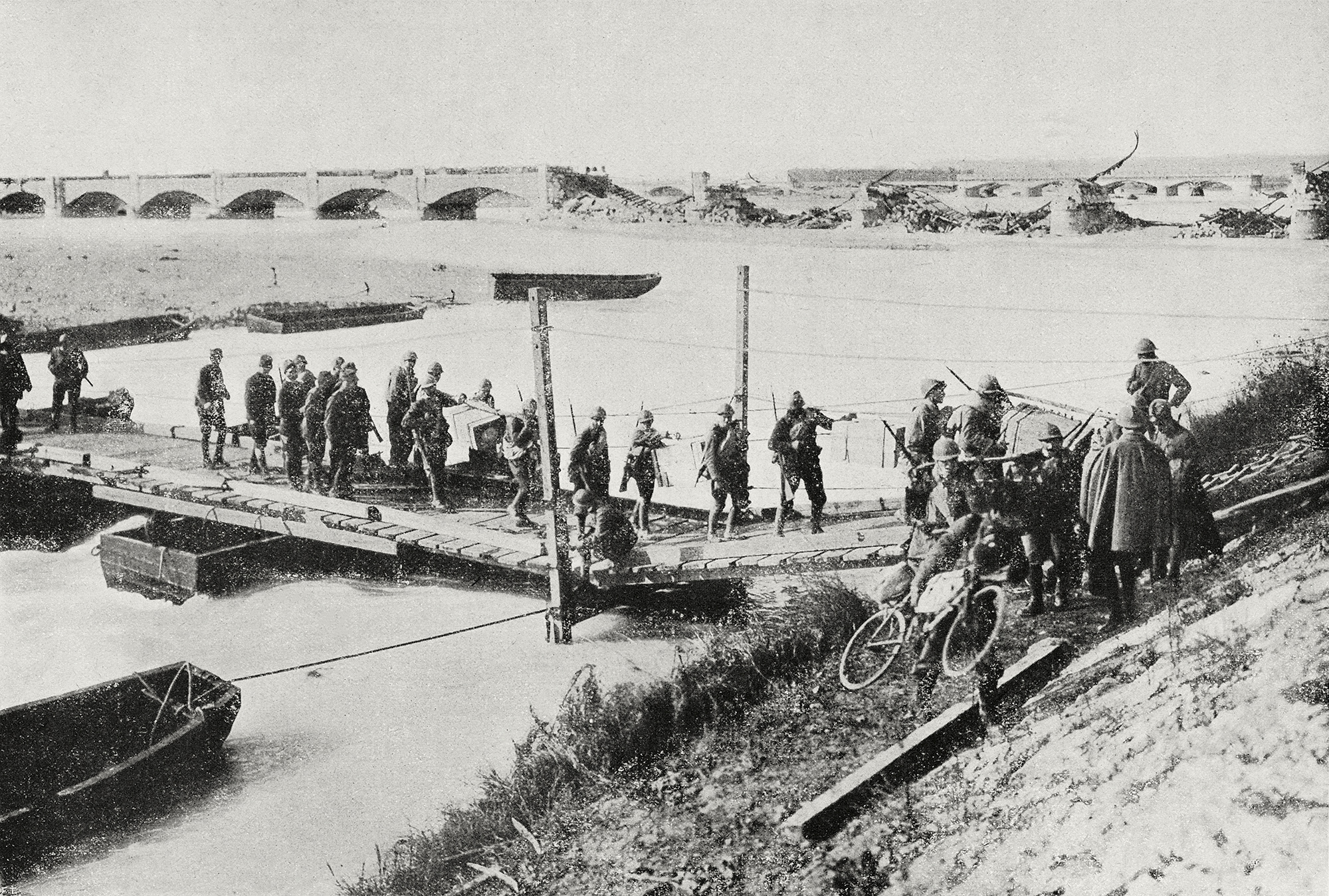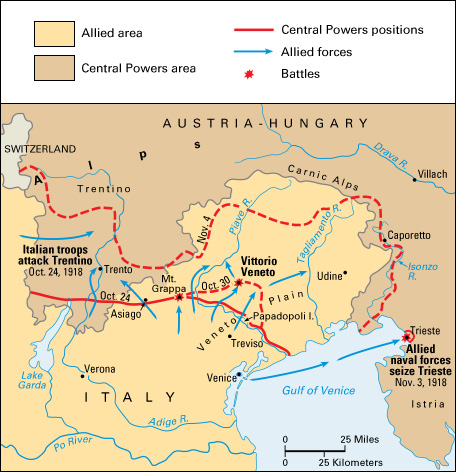Vittorio Veneto, Battle of, was an Italian assault on Austro-Hungarian forces during World War I (1914-1918). The battle took place in the autumn of 1918, from October 24 to November 4. It ended in a decisive Italian victory. Vittorio Veneto is a city in northeastern Italy . It is located near the Piave River, the site of extensive fighting during World War I. The defeat at Vittorio Veneto contributed to the end of the Austro-Hungarian empire.

Background.
Austria-Hungary allied with Germany during World War I. In May 1915, Italy entered the war against Austria-Hungary. The mountainous border between Italy and Austria-Hungary soon became a battlefront. Repeated Italian offensives gained little territory but caused both sides numerous casualties (people killed, wounded, missing, or captured). In October 1917, a combined Austro-Hungarian and German force badly defeated Italian troops in the Battle of Caporetto . After the battle, the two sides fortified positions along the Piave River. German troops were then removed from the Italian front in preparation for a large offensive on the Western Front in Belgium and France.

In June 1918, Austro-Hungarian forces failed to break the Italian line in the Battle of the Piave. Austro-Hungarian casualties were high, and the army neared collapse. Allied military leaders urged the Italians to strike back. The Italians delayed, however, hoping to build a force strong enough to ensure success. By late summer, mounting Allied success on the Western Front prevented Germany from sending reinforcements to Italy. As a result, the Austro-Hungarians were left alone on the line. At the same time, support for the war was dwindling within Austria-Hungary, where the government faced unrest and independence movements among Czechs, Hungarians, Slovaks, and other groups. Sensing an opportunity, Italian military leaders chose the anniversary of Caporetto, in October, to launch an offensive.
The Italian army massed troops for the main assault along a 50-mile (90-kilometer) front. The front stretched from Asiago in the west to near Treviso in the east. The assault’s goal was to take Vittorio Veneto, in the center. Farther west, attacks would take place in the mountainous province of Trentino. The goal there was to draw Austro-Hungarian reserves away from the main assault. A number of Allied troops aided the Italians, including soldiers from the United Kingdom, France, and the United States. Thousands of Czech troops—former deserters and prisoners of war from the Austro-Hungarian army—also fought with the Allies.
The Austro-Hungarian army expected an attack, but there was little they could do to prepare for it. Casualties, desertions, and mutinies—along with the civil unrest within Austria-Hungary—had weakened the army’s strength and morale.
The battle.
On October 24, Italian troops attacked in Trentino, but Austro-Hungarian resistance was stronger than expected. The attack stalled on the steep slopes of Mount Grappa.
Along the Piave, Allied troops landed on the river island of Papadopoli on the night of October 23-24. Bad weather briefly delayed the main attack. Early gains came slowly, and at great cost. The Allies completed the river crossing on October 27. The next day, Austro-Hungarian resistance began to crumble. Italian and Allied forces advanced all along the line. By the end of the month, they had taken Vittorio Veneto, cutting off Austro-Hungarian forces to the west. Many units of the Austro-Hungarian army refused to fight any longer. Hundreds of thousands of troops surrendered.
On November 2, Italian and Allied troops reached the Tagliamento River—some 25 miles (40 kilometers) beyond the Piave. On November 3, an Allied naval force took the key Adriatic port of Trieste . That same day, Austria-Hungary signed an armistice (agreement to stop fighting). Fighting on the Italian front ended on November 4. World War I ended on November 11.
Aftermath.
The Italian-Allied force suffered about 40,000 casualties in the Battle of Vittorio Veneto. More than 300,000 Austro-Hungarian troops were captured in the battle. Another 30,000 were killed or wounded.
During the course of World War I, some 650,000 Italian soldiers were killed, and 1 million were wounded. Austria-Hungary—fighting Italy as well as Romania , Russia , and Serbia —had 1.2 million killed and more than 3 million wounded. After the war’s end, Austria-Hungary was divided into a number of different nations and territories.
